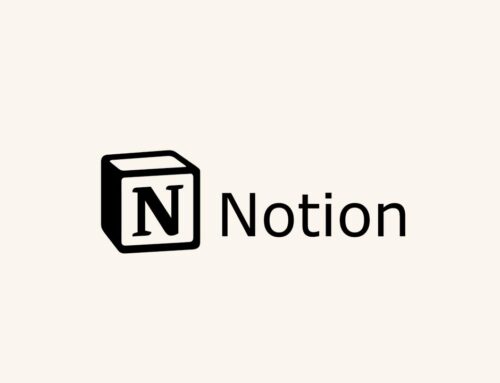Payroll Processing Automation
One such area that has seen significant transformation is payroll processing. Traditionally, payroll has been a time-consuming, error-prone task involving manual calculations, paper-based processes, and endless hours of work. However, with the advent of payroll processing automation, businesses can now streamline their payroll operations, ensuring accuracy, compliance, and efficiency.
Today’s article will dive into the world of payroll processing automation. You’ll learn what it is, how it works, and why it’s crucial for modern businesses. We’ll explore the key benefits, potential challenges, and the latest trends in payroll automation. Additionally, we’ll provide insights into selecting the right payroll automation software for your business, along with a step-by-step guide to implementation. By the end of this article, you’ll have a understanding of payroll processing automation and how it can revolutionize your business operations.
Table of Contents
- Understanding Payroll Processing Automation
- The Benefits of Payroll Processing Automation
- Potential Challenges and How to Overcome Them
- Choosing the Right Payroll Automation Software
- The Role of AI in Payroll Automation
- 10 ways AI can Transform Payroll Automation
- Implementing Payroll Processing Automation
- Top 5 Frequently Asked Questions
- Final Thoughts
- Sources
Understanding Payroll Processing Automation
What Is Payroll Processing Automation?
Payroll processing automation refers to the use of technology, particularly software, to automate the complex, repetitive tasks involved in payroll management. This includes calculating employee wages, withholding taxes, and disbursing payments. The automation process reduces human intervention, minimizing the chances of errors and ensuring compliance with legal and regulatory requirements.
How Does Payroll Processing Automation Work?
Automation software integrates with various HR systems to collect data such as employee hours, salaries, tax information, and benefits. This data is then processed automatically according to predefined rules, generating accurate payroll reports and facilitating timely payments. Modern payroll automation solutions often include features like direct deposit, tax filing, compliance tracking, and reporting, which further simplify the payroll process.
The Benefits of Payroll Processing Automation
Increased Efficiency and Time Savings
One of the most significant benefits of payroll processing automation is the efficiency it brings. By automating repetitive tasks, businesses can save a considerable amount of time. According to the American Payroll Association, automation can reduce payroll processing time by up to 80%. This allows HR teams to focus on more strategic activities rather than getting bogged down in administrative work.
Enhanced Accuracy and Compliance
Human errors in payroll processing can lead to costly mistakes and legal penalties. Payroll automation software ensures that calculations are accurate and consistent, reducing the risk of errors. Additionally, these systems are often updated with the latest tax laws and regulations, ensuring compliance and reducing the likelihood of fines.
Cost Reduction
While there is an initial investment in payroll automation software, the long-term savings are significant. By reducing the time spent on payroll, businesses can cut down on labor costs. Additionally, the reduction in errors and compliance issues can save money that would otherwise be spent on penalties and corrections.
Employee Satisfaction
Automation not only benefits employers but also employees. With automated systems, employees receive their payments on time and accurately, leading to higher satisfaction and trust in the company. Moreover, many payroll systems offer self-service portals where employees can access their payroll information, further enhancing transparency and trust.
Potential Challenges and How to Overcome Them
Data Security Concerns
With payroll data being highly sensitive, security is a top concern. Automated systems must have robust security measures, including encryption and multi-factor authentication, to protect against data breaches. Ensuring your software provider complies with industry standards, such as GDPR or CCPA, is also essential.
Implementation Challenges
Transitioning to an automated payroll system can be challenging, especially for businesses that have relied on manual processes for years. Proper planning, including choosing the right software and training staff, is crucial for a successful implementation. It may also be helpful to work with a consultant or the software provider during the transition.
Resistance to Change
Employees may resist changes, especially if they are unfamiliar with the new system. Overcoming this challenge requires clear communication about the benefits of the new system, along with comprehensive training to ensure everyone is comfortable with the new processes.
Choosing the Right Payroll Automation Software
Key Features to Look For
When selecting payroll automation software, consider features such as automated tax calculations, direct deposit, compliance management, and reporting. These features will ensure that your payroll processes are streamlined and compliant with regulations.
Integration Capabilities
The ability to integrate with your existing HR and accounting systems is crucial. Seamless integration ensures that data flows smoothly between systems, reducing the chances of errors and ensuring consistency across your business operations.
Scalability and Customization
Your payroll needs may change as your business grows. Choose a solution that can scale with your business and offers customization options to meet your specific needs. Whether it’s adding new employees or accommodating changes in tax laws, your software should be flexible enough to handle it.
The Role of AI in Payroll Automation
AI automates payroll by integrating data across platforms, performing accurate calculations, ensuring compliance, and detecting errors in real-time. It offers self-service options for employees, reduces the administrative burden on HR departments, and continuously learns to improve payroll efficiency. With AI-powered payroll automation, businesses can save time, reduce costs, and minimize errors, all while ensuring seamless compliance with regulations.
10 ways AI can Transform Payroll Automation
1. Automated Data Entry and Integration
AI can automatically gather and integrate data from multiple sources, such as employee attendance, work hours, leave requests, and benefit plans. By integrating with time-tracking systems, HR platforms, and accounting software, AI eliminates the need for manual data entry, which reduces errors and speeds up the payroll cycle.
2. Real-Time Payroll Calculations
AI can calculate payroll in real-time, including complex calculations for bonuses, overtime, deductions, and taxes. The system can adjust based on varying pay rates, tax brackets, and compliance rules, ensuring that calculations are precise and up-to-date with the latest regulations.
3. Compliance and Regulatory Updates
AI systems can continuously monitor and learn from regulatory changes related to tax laws, wage requirements, and other compliance regulations. This ensures that payroll systems remain compliant with local, state, and federal laws, avoiding costly fines or penalties for non-compliance. AI can automatically update tax rates and generate accurate tax filings.
4. Error Detection and Prevention
AI-powered payroll systems can use predictive analytics to detect anomalies in payroll data. For example, if an employee’s pay is significantly different from the usual range, the AI system can flag it for review before processing. This reduces human error, ensuring accuracy and preventing overpayments or underpayments.
5. Self-Service and Natural Language Processing (NLP)
AI-driven payroll systems often come with self-service portals for employees, where they can access their payroll data, download pay stubs, and update their personal information. Additionally, using NLP, AI chatbots can answer common payroll-related questions, such as inquiries about tax deductions, leave balances, or overtime calculations. This reduces the burden on HR teams and provides employees with instant support.
6. Expense Reimbursement Automation
AI can automate the tracking and approval of employee expenses, such as travel reimbursements or office supplies. By integrating with expense management tools, AI can review receipts, ensure expenses align with company policy, and automate reimbursements directly through payroll.
7. Fraud Detection
AI algorithms can analyze historical payroll data to detect suspicious or fraudulent activities, such as phantom employees or inflated hours. AI systems are capable of identifying patterns and alerting payroll managers of any irregularities that need investigation, significantly enhancing security.
8. Forecasting and Workforce Analytics
AI can use historical payroll data to forecast future payroll expenses, helping businesses make more accurate financial predictions. By analyzing patterns in employee wages, turnover, and seasonal hiring needs, AI systems can predict staffing costs, aiding in better budgeting and financial planning.
9. Automated Tax Filing and Reporting
AI can generate and file taxes on behalf of businesses, reducing the administrative burden. It can automate the generation of payroll tax reports, including quarterly and annual filings, ensuring they are completed on time and in compliance with local and national tax authorities.
10. Machine Learning for Continuous Improvement
AI systems learn from the data they process. Over time, they can optimize payroll schedules, recommend process improvements, and predict when certain issues may arise (such as cash flow shortages during payroll disbursement). Machine learning algorithms refine payroll workflows by identifying inefficiencies and suggesting optimizations.
Implementing Payroll Processing Automation
Step-by-Step Implementation Guide
- Assess Your Current Payroll Process: Identify pain points and inefficiencies.
- Choose the Right Software: Based on the features, integration capabilities, and scalability.
- Plan the Transition: Create a detailed implementation plan, including timelines and responsibilities.
- Train Your Team: Provide comprehensive training for all employees who will use the system.
- Go Live: Implement the system in phases to ensure a smooth transition.
- Monitor and Optimize: Regularly review the system’s performance and make necessary adjustments.
Best Practices for a Smooth Transition
- Communicate Early and Often: Keep employees informed throughout the process.
- Start Small: Implement the system in stages, starting with a pilot program if possible.
- Seek Expert Help: Don’t hesitate to bring in external experts or consultants to assist with the transition.
Top 5 Frequently Asked Questions
Final Thoughts
The most important takeaway from this article is that payroll processing automation is not just a technological upgrade; it’s a strategic move that can transform how your business operates. By automating payroll, you’re not only improving efficiency and accuracy but also ensuring compliance, reducing costs, and enhancing employee satisfaction. The transition may require careful planning and investment, but the long-term benefits make it a worthy endeavor. Embrace payroll automation, and you’ll find that it’s a game-changer for your business.
Sources
- American Payroll Association
- GDPR Compliance for Payroll
- IRS Payroll Guidelines
- Capterra Payroll Software Reviews
- CCPA Compliance Guidelines









Leave A Comment